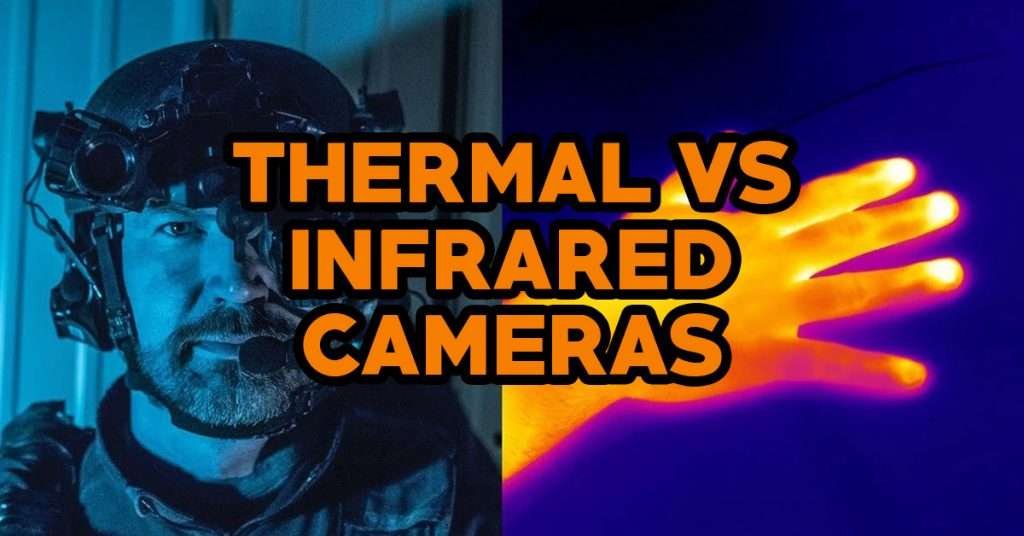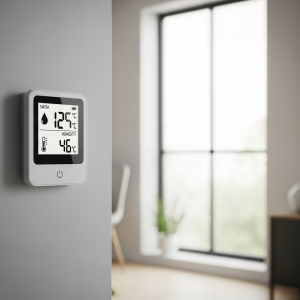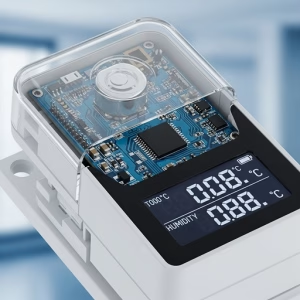A wide range of applications are possible with thermal and infrared cameras in the field of advanced imaging technology. We can perceive more than the naked eye can with both of these cameras, but in different ways. As we explore their underlying technologies, applications, and benefits, we will explore the fundamental differences between thermal and infrared cameras.

Thermal vs. Infrared Camera: Key Differences
It is both possible to detect and visualize heat using thermal and infrared cameras, but their functions and applications are different. Infrared and thermal cameras have many differences, as shown in this comparison:
Detection Mechanism
Thermal Cameras
- Function: Heat is detected by this sensor. A thermometer measures the radiation produced by objects above absolute zero in the form of infrared radiation (heat).
- Image Output: Thermograms are images with different colors representing different temperatures. Temperature differences as small as 0.1 degrees Celsius can be detected by these cameras.
- Technology: Long-wave infrared (LWIR) sensors are necessary (8-14 microns).
Infrared Cameras:
- Function: The sensor primarily detects near-infrared (NIR) and short-wave infrared (SWIR) radiation reflected off objects. The scene needs to be illuminated by infrared light from an external source.
- Image Output: Infrared light will be reflected in black-and-white images.
- Technology: Detects wavelengths between 0.71 and 1.4 microns or between 1.4 and 3 microns with sensors.
Image Interpretation
Thermal Cameras:
- Output: Temperature variations are represented by color-coded images. Red, orange, and yellow are the colors of hot areas, while blue and green are the colors of cooler areas.
- Interpretation: To interpret temperature differences accurately, one must understand thermal imaging principles.
Infrared Cameras:
- Output: The same as black-and-white photographs, monochromatic images. High reflectivity is indicated by bright areas, while low reflectivity is indicated by dark areas.
- Interpretation: The visual representation of the data is easier to understand, but temperature data is not provided.
Cost and Complexity
Thermal Cameras:
- Cost: Heat radiation detectors and interpreters tend to be more expensive because they require advanced sensors and technology.
- Complexity: Thermal images require specialized training for accurate interpretation and complex data analysis.
Infrared Cameras:
- Cost: For basic night vision applications, NIR cameras are generally less expensive than thermal cameras.
- Complexity: Compared to standard black-and-white photos, they produce more intuitive visual images.
Thermal vs. Infrared Camera: When to Use Them?
The specific scenarios and requirements where each technology excels must be considered when deciding whether to use a thermal or infrared camera.
Thermal Camera
- Cameras for industrial inspections: Temperature-sensitive cameras are used in industrial settings to detect overheating, electrical problems, and machine defects. Optimizing maintenance schedules and preventing equipment breakdowns are possible with them.
- Diagnostics: The thermal imaging sensors on thermal cameras detect problems with insulation, air leaks, and energy inefficiency in buildings. A structural integrity audit can be conducted with them and energy audits can be conducted with them.
- Monitoring wildlife: The use of thermal cameras by scientists and conservationists provides information about animal behavior, tracking movement patterns, and estimating population size in natural habitats.
- Firefighting: Firefighters use thermal cameras to identify hotspots inside burning structures and to find people in smoke-filled spaces. In this way, firefighting operations can be conducted safely and effectively.
- HVAC and energy efficiency: Heat loss and air leaks in HVAC systems can be identified with thermal cameras. By doing this, energy efficiency can be improved.
Infrared Camera
- Night vision: By capturing objects and living beings’ heat, infrared cameras are used extensively in night vision applications.
- Medical imaging: For example, thermal imaging uses infrared cameras for detecting changes in blood flow, identifying inflammation, and monitoring patient conditions using infrared cameras.
- Security and surveillance: When visibility is limited or there is complete darkness, infrared cameras are indispensable in detecting intruders. In perimeter security and surveillance systems, these components are highly prized because of their exceptional capabilities.
- Agriculture: Infrared cameras can determine how well crops are growing, how much water is being used, and what kinds of pests are present in fields by calculating variations in temperature.
What’s Better for Hunting: Thermal or Infrared?
Infrared and thermal imaging offer unique advantages when it comes to hunting. A hunter’s preference, hunting scenario, and environmental conditions play a major role in choosing between the two. For the purpose of determining which technology might be best for you, here’s a detailed comparison:
Thermal Imaging
Advantages:
- Complete Darkness Performance: It is possible to detect heat signatures without the use of light, so thermal cameras can be used in complete darkness.
- Camouflage Detection: Its ability to see through foliage and other camouflage comes from the ability to detect animals from their heat signatures.
- Weather Penetration: Traditional night vision may struggle in foggy, smokey, or light rainy weather conditions. Thermal cameras work well in these situations.
- Long Range Detection: By using thermal imaging, animals at a distance can be spotted more easily because heat sources can be detected from a great distance.
- No Light Needed: It is possible to maintain stealth while hunting with thermal cameras since they detect heat rather than visible light.
Disadvantages:
- Cost: Night vision devices with infrared capabilities are generally more expensive than those with thermal imaging.
- Detail Resolution: Infrared cameras provide more detailed images than thermal cameras, which means it’s harder to recognize specific animal features with thermal imaging.
Infrared Imaging
Advantages:
- Detailed Imagery: Animals can be identified using infrared cameras because they provide more detailed images.
- Cost-Effective: A thermal imaging device tends to be more expensive than an infrared night vision device.
- Enhanced Identification: Visually distinct animals and objects become easier to distinguish with more detailed visuals.
- Availability: You can find a device that fits your needs and budget among the many infrared night vision devices available today.
Disadvantages:
- Light Requirement: Moonlight or an infrared illuminator are both required for infrared cameras. A light source is required in total darkness.
- Limited Performance in Obscurants: Light may be diffused or blocked by fog, smoke, or heavy rain, making it difficult for infrared cameras to function properly.
- Shorter Detection Range: There is a shorter effective detection range of infrared night vision compared to thermal imaging.
Final Verdict
By comparing thermal and infrared cameras, we can see how each enhances our depth perception and vision in a unique but complementary way. Various industries have benefited from each technological advancement, including security and surveillance, hunting, and scientific research. Let your friends know about this article if you like it and find it helpful. If you have any comments about thermal or infrared cameras, please let us know. Let me know what you think in the comments!




